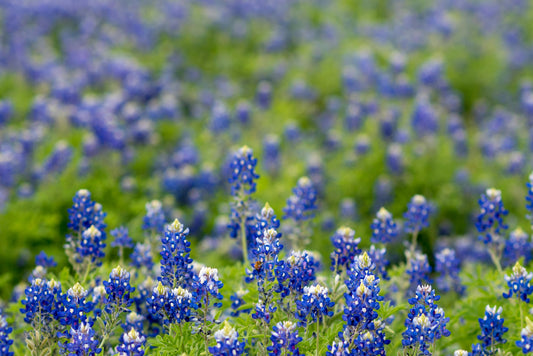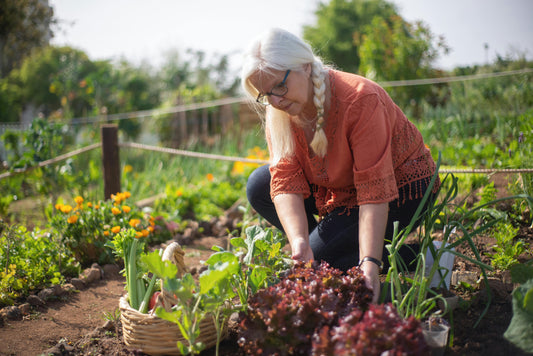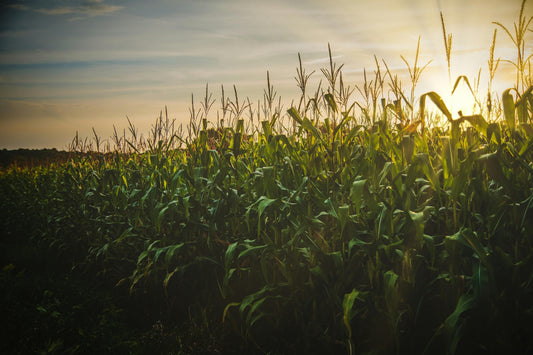Austin, Texas sits at the intersection of three distinct ecological regions - Blackland Prairie, Edwards Plateau, and Post Oak Savannah - creating diverse soil conditions including clay-rich Vertisols, fertile Mollisols, and shallow rocky soils that influence urban development, agriculture, and gardening success.
Austin Texas Soil Types: Complete Guide for Urban Gardening and Agriculture
Austin, Texas, celebrated for its vibrant culture and rapid growth, occupies a unique position at the crossroads of distinct geological and ecological zones. This location creates remarkable soil diversity that shapes agricultural practices, urban development patterns, and gardening success throughout the greater Austin metropolitan area.
Austin's Soil Foundation
Austin's soil diversity reflects its position at the intersection of three major ecological regions, each contributing distinct soil characteristics that influence land use throughout Travis County. The USDA Natural Resources Conservation Service Web Soil Survey documents numerous soil mapping units across the region, each with unique properties affecting agricultural potential and urban development.
According to Travis County Texas A&M AgriLife Extension, the region's soils formed through complex geological processes involving sediment deposition, weathering, and biological activity over thousands of years. Understanding these soil characteristics enables successful crop production, sustainable landscaping, and informed urban planning decisions.
Three Ecological Regions Shaping Austin's Soils
Blackland Prairie
The Blackland Prairie extends across eastern and central Austin, characterized by deep, dark, clay-rich soils with high fertility and water-holding capacity. These soils formed from weathered limestone and marl deposits, creating the distinctive black clay that gives the region its name.
Blackland Prairie soils support productive agriculture including cotton, corn, sorghum, and cattle grazing operations. The high clay content provides excellent nutrient retention but creates challenges related to drainage, workability, and shrink-swell behavior during wet-dry cycles.
Edwards Plateau
Western Austin transitions into the Edwards Plateau, featuring shallow soils over limestone bedrock with rocky terrain and excellent drainage. These soils typically contain significant rock fragments and demonstrate limited depth for agricultural production.
Edwards Plateau soils excel for native plant communities, wildlife habitat, and ranching operations adapted to the region's natural conditions. The shallow depth and rocky nature limit intensive agriculture but support drought-tolerant vegetation and specialty crops.
Post Oak Savannah
Eastern Austin contains soils transitioning toward the Post Oak Savannah region, characterized by sandy and loamy textures with moderate fertility and good drainage characteristics. These soils support mixed vegetation including native grasses, hardwood trees, and diverse plant communities.
Post Oak Savannah soils provide balanced conditions for various agricultural applications including crop production, livestock grazing, and forestry operations when properly managed.
Primary Soil Types in Austin
Vertisols: Clay-Rich Blackland Prairie Soils
Vertisols represent Austin's most distinctive soil type, covering extensive areas of the Blackland Prairie region. These dark, clay-rich soils contain high levels of expansive clay minerals that create significant shrink-swell behavior during seasonal moisture changes.
Vertisol characteristics include high organic matter content, excellent fertility, and strong water retention capacity. However, the high clay content creates challenges including difficult workability when wet, potential foundation issues for buildings, and surface cracking during dry periods.
Agricultural applications include cotton, corn, wheat, and sorghum production, with these soils supporting some of Texas's most productive farmland when properly managed. Urban applications require careful consideration of foundation design and drainage systems.
Mollisols: Fertile Grassland Soils
Mollisols occur throughout Austin's prairie regions, characterized by thick, dark surface horizons rich in organic matter from native grassland vegetation. These soils demonstrate high fertility and excellent structure for agricultural production.
The deep, organic-rich topsoil provides outstanding growing conditions for corn, soybeans, small grains, and improved pasture grasses. NRCS soil surveys identify Mollisols as some of the most productive agricultural soils in the Austin region.
Management considerations include erosion control on sloped areas through conservation practices like cover cropping, contour farming, and maintaining permanent vegetation on sensitive sites.
Alfisols: Moderately Fertile Soils
Alfisols appear in transitional areas between major soil regions, featuring well-drained profiles with clay-enriched subsoils and moderate fertility levels. These soils support diverse agricultural and landscape applications throughout eastern Austin.
Typical land uses include small grain production, native grass establishment, livestock grazing, and mixed farming operations. The moderate fertility requires regular soil testing and appropriate fertilization programs for optimal productivity.
Compaction risks necessitate careful timing of field operations and consideration of reduced tillage practices to maintain soil structure and biological activity.
Inceptisols: Young, Shallow Soils
Inceptisols occur on slopes and areas with rapid erosion or recent soil formation, characterized by weak profile development and variable characteristics. These soils appear throughout Austin's hilly terrain and urbanized areas.
Limited agricultural potential restricts intensive crop production, but these soils support native vegetation, wildlife habitat, and extensive grazing operations when properly managed. Urban applications include parks, green spaces, and low-impact development.
Erosion control becomes critical on sloped sites through permanent vegetation establishment, terracing, and appropriate land use planning that respects natural limitations.
Entisols: Alluvial River Valley Soils
Entisols occur along the Colorado River and tributary floodplains, formed from recent alluvial deposits with minimal profile development. These young soils demonstrate variable characteristics depending on parent material and flood history.
Agricultural potential includes vegetable production, fruit cultivation, and specialty crops when combined with proper water management and flood protection. The variable nature requires site-specific evaluation and management approaches.
Flood risks necessitate careful crop selection, appropriate infrastructure placement, and understanding of seasonal flooding patterns for successful utilization.
Urban Soil Conditions
Modified Urban Soils
Rapid urbanization has significantly altered Austin's natural soil profiles throughout developed areas. Urban soils often contain construction fill, demolition debris, and imported materials that create highly variable and often challenging growing conditions.
Common urban soil issues include compaction from heavy equipment, reduced organic matter content, altered drainage patterns, and potential contamination from industrial activities or urban runoff. These conditions require specialized assessment and management approaches.
Successful urban landscaping and gardening requires soil testing, decompaction techniques, organic matter additions, and potentially raised bed construction to create suitable growing environments for plants and gardens.
Soil Testing and Analysis
Professional Testing Services
The Texas A&M AgriLife Extension Service Soil, Water, and Forage Testing Laboratory provides comprehensive soil analysis services for Austin area residents and agricultural producers. Professional testing evaluates pH, nutrient levels, organic matter content, and soil texture to guide management decisions.
Travis County AgriLife Extension offers local support for soil testing interpretation, sample collection guidance, and management recommendations tailored to specific soil types and intended land uses.
Soil Testing Process
According to Take Care of Texas guidelines, proper soil sampling involves collecting 10-15 samples from different areas of the site, mixing thoroughly, and submitting approximately two cups of soil for laboratory analysis.
Basic soil testing costs approximately $12 and provides essential information including pH, nutrient levels, and fertilizer recommendations. Results typically return within 2-4 weeks and include detailed management recommendations specific to intended land use.
Sustainable Soil Management Practices
Clay Soil Management
Vertisol and clay-rich soils require specialized management to address shrink-swell behavior and workability challenges. Organic matter additions through compost application improve soil structure, enhance drainage, and reduce compaction risks.
Cover crop establishment helps prevent erosion, adds organic matter, and improves soil biology. Leguminous cover crops provide additional nitrogen while protecting soil during fallow periods between cash crops.
Erosion Prevention
Austin's rolling terrain requires careful attention to erosion control through conservation practices adapted to local conditions. NRCS Texas promotes practices including contour farming, terracing, and permanent vegetation establishment on sensitive slopes.
Reduced tillage systems preserve soil structure, maintain organic matter, and reduce erosion risks while supporting profitable agricultural production on suitable soils.
Water Management
Austin's variable rainfall patterns require efficient water management systems adapted to specific soil characteristics. Clay soils benefit from improved drainage during wet periods, while sandy soils require water conservation techniques during dry periods.
Drip irrigation systems provide precise water application while reducing waste and preventing soil erosion from surface runoff, particularly important for urban and specialty crop applications.
Austin Soil Management Process
- Identify your specific soil type using the NRCS Web Soil Survey and field assessment of texture, drainage, and depth characteristics.
- Conduct professional soil testing through Texas A&M AgriLife Extension for pH, nutrients, and organic matter content.
- Apply targeted soil amendments based on test results - compost for structure improvement, gypsum for clay modification, and pH adjusters as needed.
- Implement conservation practices including cover crops, erosion control measures, and appropriate tillage systems for your soil type and slope conditions.
- Select suitable plants and crops adapted to your soil conditions - drought-tolerant natives for clay soils, appropriate varieties for shallow soils.
- Monitor soil health indicators through regular visual assessment and periodic re-testing to track improvements and guide ongoing management decisions.
Local Resources and Support
Travis County Master Gardener Program provides expert gardening advice and research-based recommendations for Austin area homeowners. Their volunteers offer free consultation services and educational workshops on soil management and sustainable gardening practices.
Local garden centers including The Natural Gardener (8648 Old Bee Caves Road) specialize in organic gardening supplies and soil amendments appropriate for Austin's soil conditions. These retailers provide soil testing supplies and consultation services for residential applications.
Environmental Benefits and Conservation
Ecosystem Services
Healthy soil management provides essential ecosystem services including carbon sequestration, water filtration, and habitat support for beneficial organisms. Austin's diverse soils contribute to regional biodiversity and environmental quality when properly managed.
Soil conservation practices enhance these environmental benefits while maintaining economic productivity for agricultural and urban applications throughout the region.
Water Quality Protection
Proper soil management prevents erosion and nutrient runoff that can degrade water quality in Austin's waterways including the Colorado River and Barton Springs. Conservation practices protect these valuable water resources while supporting productive land use.
Frequently Asked Questions
What are the main soil types in Austin, Texas?
Austin features five primary soil types: Vertisols (clay-rich Blackland Prairie soils), Mollisols (fertile grassland soils), Alfisols (moderately fertile soils), Inceptisols (young, shallow soils), and Entisols (alluvial river valley soils). Each type requires specific management approaches for optimal productivity and successful gardening or farming.
Why are clay soils challenging for construction in Austin?
Clay-rich Vertisol soils have high shrink-swell capacity, expanding significantly when wet and contracting when dry, which can damage building foundations, driveways, and roadways. Proper foundation design, adequate drainage, and soil preparation are essential for construction on these expansive soils.
What crops grow best in Austin's fertile soils?
Mollisols and fertile Vertisols support crops like corn, cotton, sorghum, and soybeans due to their high organic matter content and excellent nutrient availability. These soils also excel for improved pasture grasses, hay production, and diverse vegetable crops with proper management.
How can I improve urban soils in Austin for landscaping?
Urban soils benefit from decompaction through mechanical aeration, organic matter additions like compost, improved drainage systems, and raised bed construction for intensive gardening. These practices address common urban soil issues including compaction, reduced fertility, and altered drainage patterns.
Where can I get soil testing in Austin?
The Texas A&M AgriLife Extension Service Soil, Water and Forage Testing Laboratory provides professional soil testing services. Travis County AgriLife Extension office offers local guidance, sample collection assistance, and result interpretation.
What native plants work best in Austin's clay soils?
Native Texas plants adapted to clay soils include Texas redbud, live oak, little bluestem grass, and wildflowers like bluebonnets and Indian paintbrush. These species tolerate the moisture variations and clay texture while requiring minimal irrigation once established.
Sources
- Natural Resources Conservation Service, USDA. Web Soil Survey. https://websoilsurvey.nrcs.usda.gov/app/
- Texas A&M AgriLife Extension. Travis County Web Soil Survey Guide. https://travis-tx.tamu.edu/about-2/horticulture/soils-and-composting-for-austin/web-soil-survey-map-explorer/
- NRCS Soil Survey Information. https://www.nrcs.usda.gov/conservation-basics/natural-resource-concerns/soil/soil-survey
- Texas A&M AgriLife Extension Service. Soil, Water and Forage Testing Laboratory. https://soiltesting.tamu.edu/
- Travis County Texas A&M AgriLife Extension. https://agrilifeextension.tamu.edu/counties/travis-county/
- Take Care of Texas. Soil Testing Guide. https://takecareoftexas.org/about-us/blog/soil-testing-three-easy-steps
- NRCS Texas Conservation Programs. https://www.nrcs.usda.gov/conservation-basics/conservation-by-state/texas












